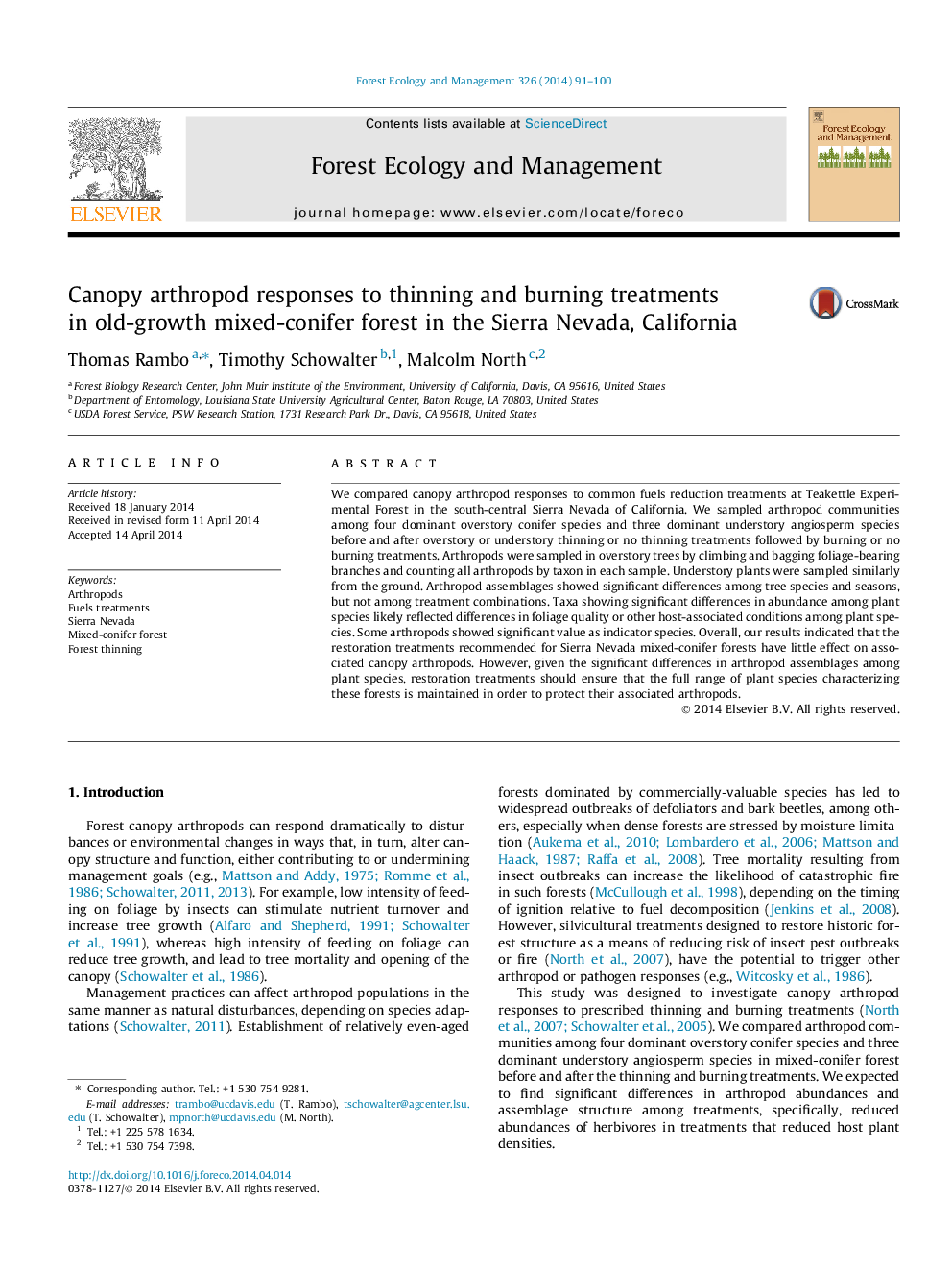| Article ID | Journal | Published Year | Pages | File Type |
|---|---|---|---|---|
| 6543531 | Forest Ecology and Management | 2014 | 10 Pages |
Abstract
We compared canopy arthropod responses to common fuels reduction treatments at Teakettle Experimental Forest in the south-central Sierra Nevada of California. We sampled arthropod communities among four dominant overstory conifer species and three dominant understory angiosperm species before and after overstory or understory thinning or no thinning treatments followed by burning or no burning treatments. Arthropods were sampled in overstory trees by climbing and bagging foliage-bearing branches and counting all arthropods by taxon in each sample. Understory plants were sampled similarly from the ground. Arthropod assemblages showed significant differences among tree species and seasons, but not among treatment combinations. Taxa showing significant differences in abundance among plant species likely reflected differences in foliage quality or other host-associated conditions among plant species. Some arthropods showed significant value as indicator species. Overall, our results indicated that the restoration treatments recommended for Sierra Nevada mixed-conifer forests have little effect on associated canopy arthropods. However, given the significant differences in arthropod assemblages among plant species, restoration treatments should ensure that the full range of plant species characterizing these forests is maintained in order to protect their associated arthropods.
Related Topics
Life Sciences
Agricultural and Biological Sciences
Ecology, Evolution, Behavior and Systematics
Authors
Thomas Rambo, Timothy Schowalter, Malcolm North,
